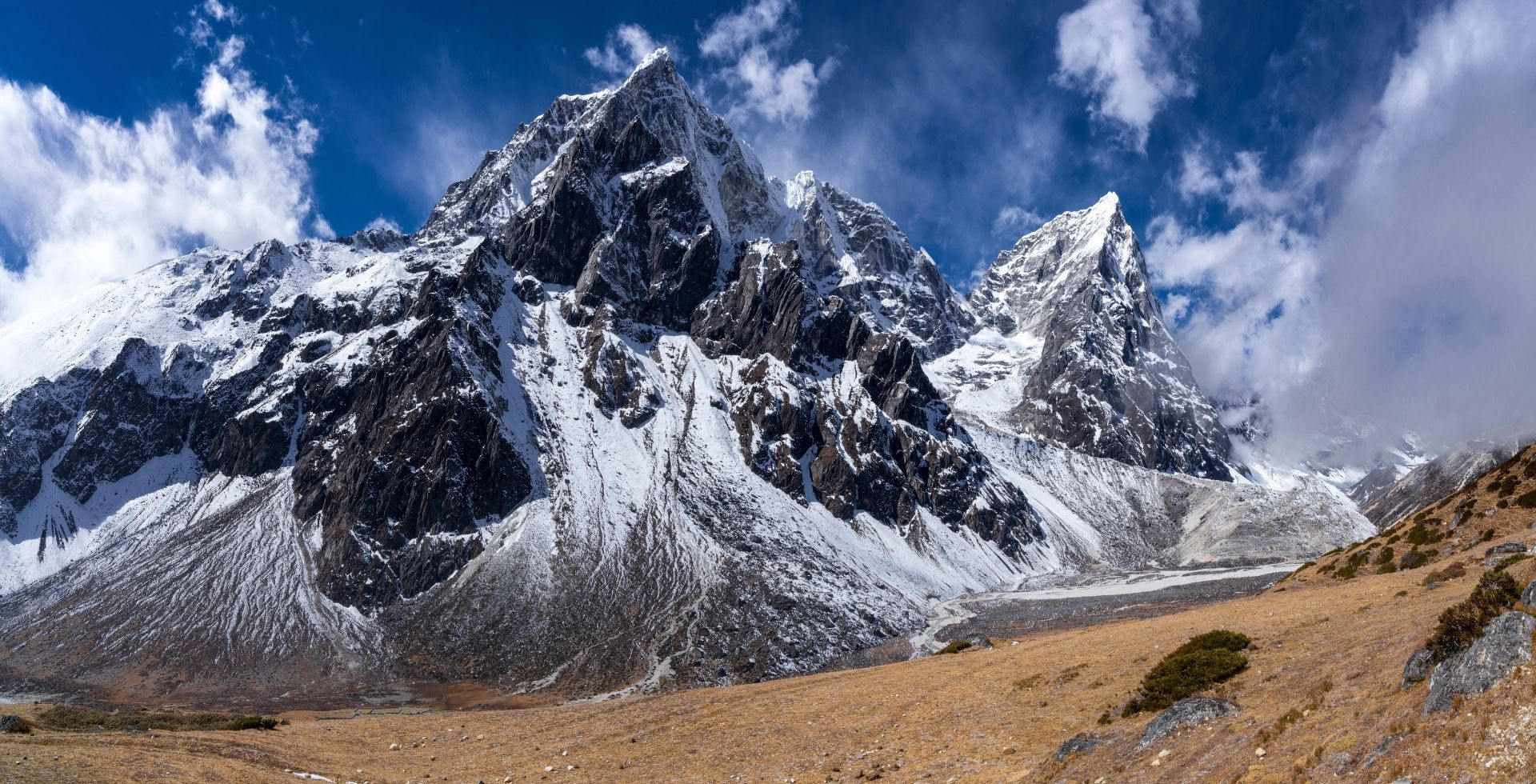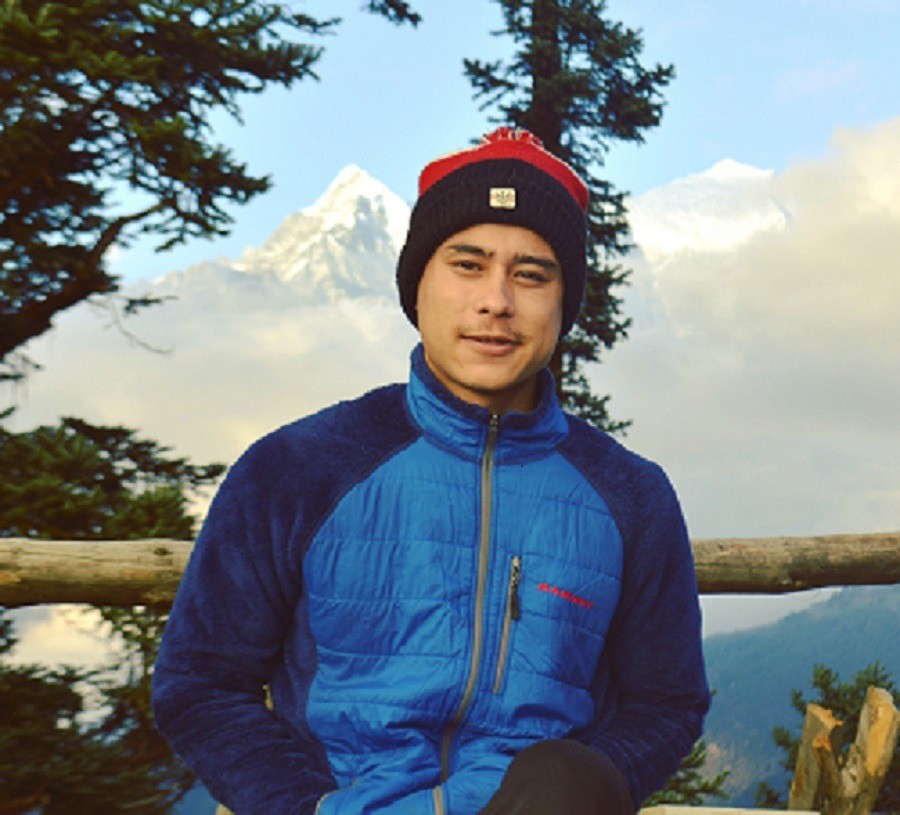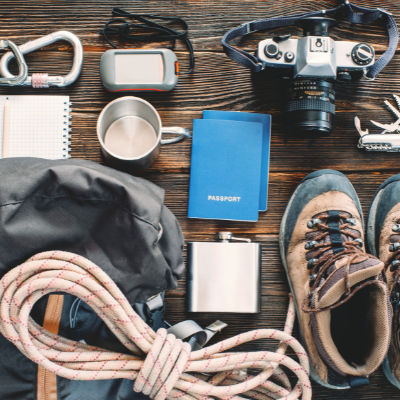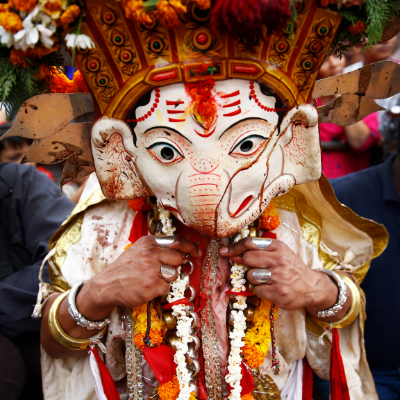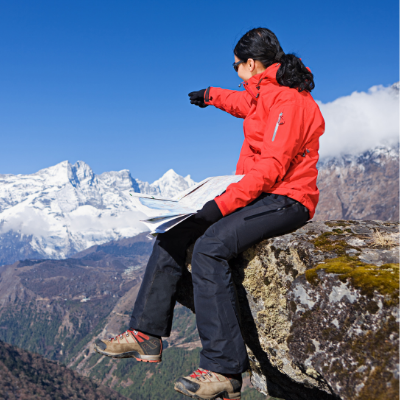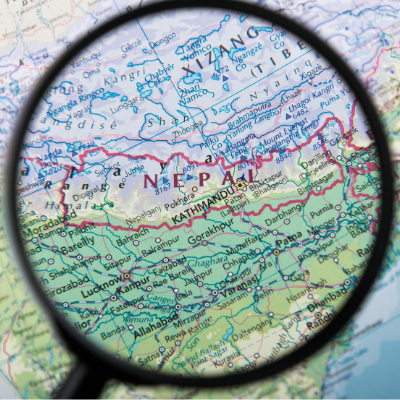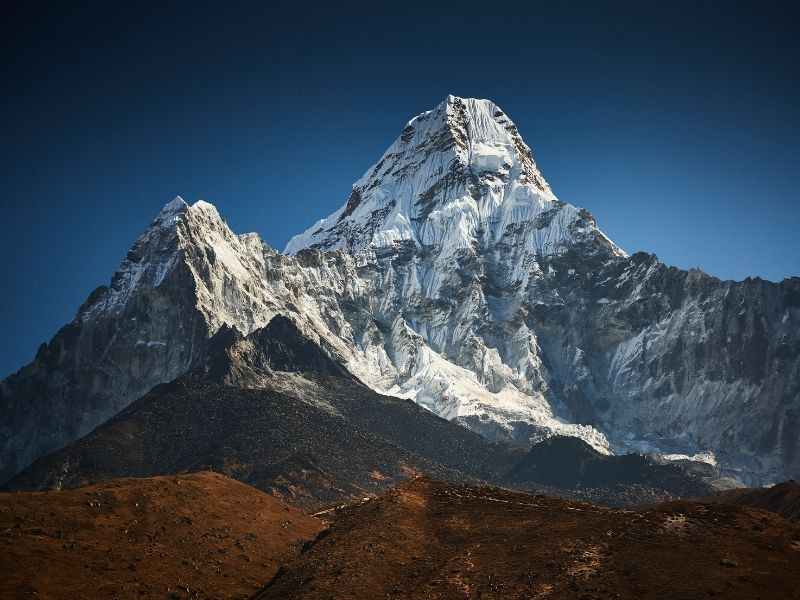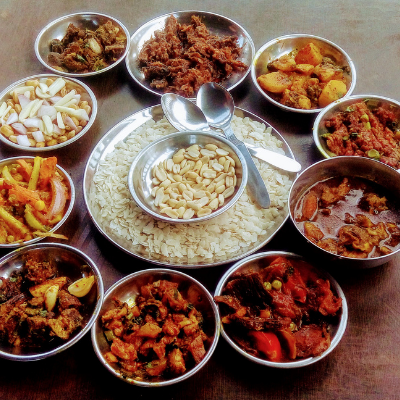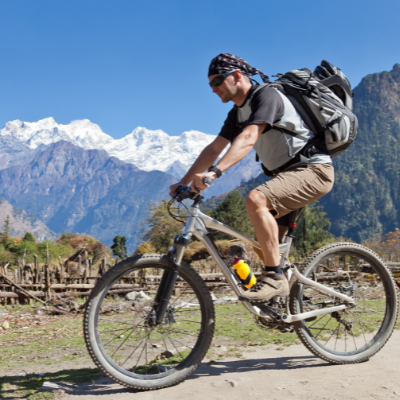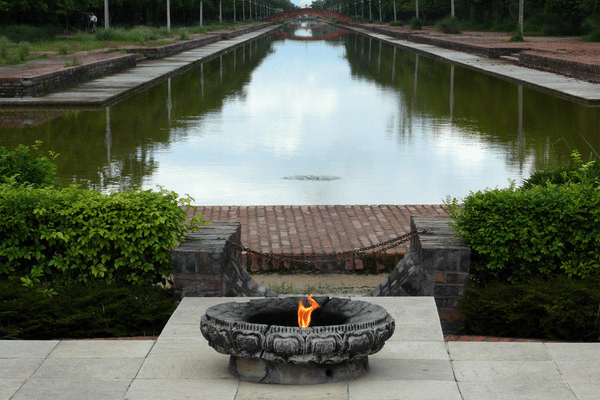5 Best Treks in Everest Region
The Everest region trekking is the most renowned around the globe. It is located in the northeastern part of the Nepalese side of Mount Everest. Also known as the Khumbu region, it is in the Solukhumbu district of Nepal.
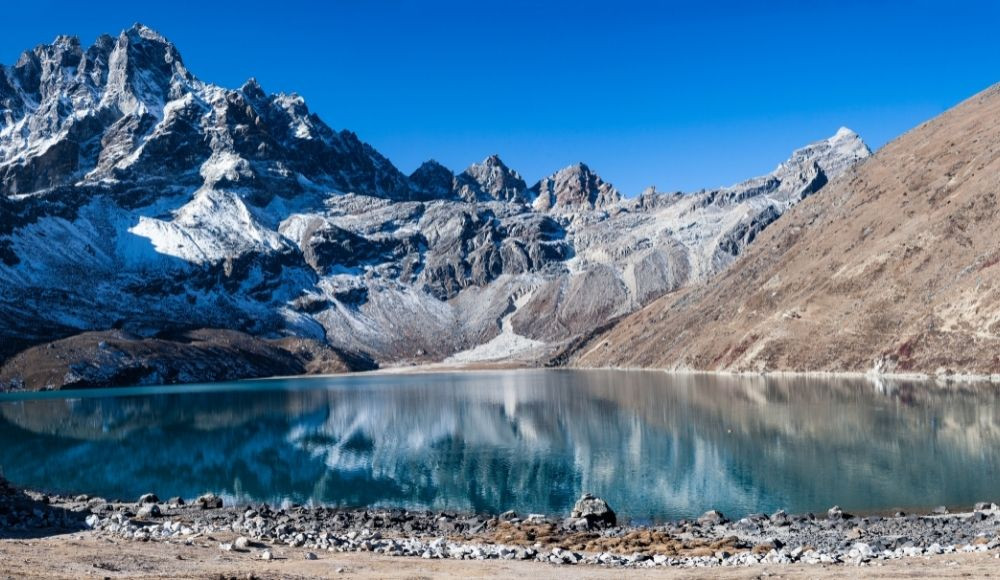
Everest region offers various trekking options for adventure trekkers. Nepal is an abode for empyrean mountains, the home to the world’s ten tallest peaks. Allured by the snowy landscape and the mystic that the mountains behold, many arrive from all over the world to trek through some of its treasures and even to summit the peak. Mount Everest, Annapurna, Machapuchare, Kanchanjunga are some of the pinnacles that try touching the sky.
Among them, Everest is the highest mountain in the whole world. Trekking is one of the best things one can experience in the Everest region.
Here we have the list of best treks in the Everest region:
- Everest Base Camp Trek
- Everest Three Passes Trek
- Everest Base Camp Gokyo Lake Trek
- Cho Oyu Base Camp Trek
- Everest Base Camp and Mera Peak Trek
The Everest region trekking is the most renowned around the globe. It is located in the northeastern part of the Nepalese side of Mount Everest. Also known as the Khumbu region, it is in the Solukhumbu district of Nepal.
Not to miss, the Everest region has fascinating ups and downs to trek through that reveal the trekkers, the jewels of this region. There are four thousand to eight thousand meters high snowy peaks in the region like Makalu Barun, Mount Everest, Cho Oyu, Lhotse, Amadablam, Mera peak. Sagarmatha National park and Makalu Barun National Park in the region unfolds the mountain ecosystem and endangered fauna like snow leopard, red panda and Tibetan rabbit.
The Sherpa community and their lifestyle are what makes the region more appealing, adding a cultural contrast to it. The geography of the Everest region is mostly rugged rocky terrains, crystal glaciers, alpine meadows, deep settlements and Sherpa villages.
Table Of Content
Table Of Content
Everest Base Camp Trek
Everest base camp trek is a fulsome experience that the trekkers can truly hail to be panoramically inexplicable, like a snippet of paradise on earth. It is the most famous trek in the Everest region. Steadily holding their trekking poles, the trekkers gorge through lush-green farmlands, sparkling rivers, forests, terrains, dramatic glaciers to mind-boggling snowy mountains one after another.
With the flush in your cheeks getting red, you will go on each step wanting for more. Your wanderlust will be satisfied as you reach the majestic Everest base camp, the foot of the highest peak in the world. The Everest base camp trek is no wonder the most popular of Nepal.
Namche Bazaar, Kalapathar, Sagarmatha National Park and Ngozumpa glacier are the noteworthy highlights of the trek. High passes, Cho la, Renjo la and Kongma la and monasteries like Tengboche monastery, Rimishung monastery add to its grandeur. Staying in local lodges and tea houses with Sherpas will be like bar-hopping with buddies for the trekkers. It will be a more fulfilling journey as you acclimatize with the altitude and the Sherpa lifestyle.
| Altitude |
Base Camp- 5,364m above sea level
Kalapathar-5,545m above sea level (The highest point of trek) |
| Starting Point |
Lukla |
| Ending Point |
Lukla |
| Distance (both-ways) |
130 Kilometres |
| Best time to visit |
Before monsoon (March-May)
After monsoon (October-December) |
| Trip Grade |
Moderate Difficult |
| Duration |
14 days |
The best part is that there is NO AGE LIMIT for the trek.
Related Article: Luxurious Hotels in Everest Base Camp Trek
Related Article: Best time to visit Everest Base Camp
Everest Base Camp Trek Itinerary
|
Day 1: Kathmandu Arrival, Transfer to Hotel.
|
|
Day 2: Flight to Lukla, Trek to Phakding.
|
|
Day 3: Trek to Namche Bazaar.
|
|
Day 4: Rest Day at Namche Bazaar.
|
|
Day 5: Trek to Tengboche.
|
|
Day 6: Trek to Dingboche.
|
|
Day 7: Rest Day in Dingboche.
|
|
Day 8: Trek to Lobuche.
|
|
Day 9: Trek to Everest Base Camp, Back to Gorak Shep.
|
|
Day 10: Trek to Kala Patthar, Back to Pangboche.
|
|
Day 11: Trek to Namche Bazaar.
|
|
Day 12: Trek to Lukla.
|
|
Day 13: Flight to Kathmandu.
|
|
Day 14: Departure.
|
Everest Three Passes Trek
Everest Three Pass Trek is an ultimate voyage for experienced trekkers which takes them around the less-seen parts of Khumbu Region. The three passes include Reng jo La, Cho La, and Kongma La that connect the valleys of Bhotekoshi, Gokyo and Imja Tse. Icy Cho la is the most technical one. Everest, Cho Oyu, Amadablam, Thamserku, Kusum Kanguru, Kongde Ri, Lhotse, Nuptse, Makalu are the main peaks that offer a scenic view in the trek.
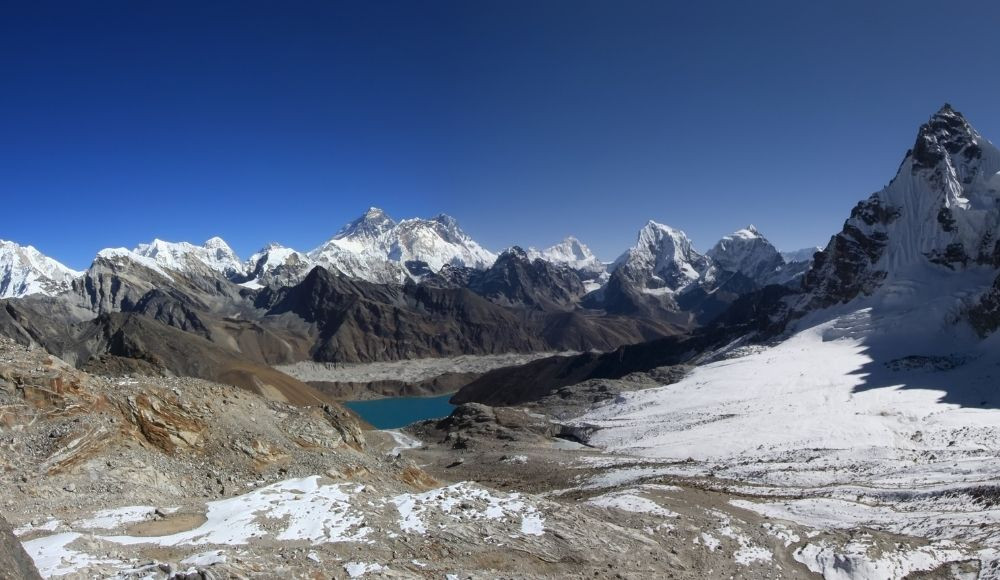
The trekkers get to experience a diverse Sherpa lifestyle, the monasteries and snow-clad landscape of the Base Camp, Ngozumpa Glacier and Gokyo Ri also. However, it is a much harder trek than the earlier one.
| Altitude |
Everest Base Camp - 5264m
Gokyo Lake - 4790m
|
| Starting Point |
Lukla |
| Ending Point |
Lukla |
| Distance (both-ways) |
166 kilometers |
| Best time to visit |
Spring (March-May)
Autumn (October-December)
|
| Trip Grade |
Moderate to Strenuous |
| Duration |
19 Days |
Permits are needed at several points of the trek.
Everest Three Pass Trek Itinerary
|
Day 1: Kathmandu Arrival, Transfer to Hotel.
|
|
Day 2: Kathmandu Sightseeing, Trek Preparation Day.
|
|
Day 3: Flight to Lukla, Trek to Phakding.
|
|
Day 4: Trek to Namche Bazaar.
|
|
Day 5: Acclimatization and Exploration Day.
|
|
Day 6: Trek to Tengboche.
|
|
Day 7: Trek to Dingboche.
|
|
Day 8: Trek to Chhukung Village.
|
|
Day 9: Trek to Lobuche via Kongma La Pass.
|
|
Day 10: Hike to Gorak Shep and Everest Base Camp.
|
|
Day 11: Hike to Kala Patthar, Trek to Dzongla.
|
|
Day 12: Trek to Thanna via Cho La Pass.
|
|
Day 13: Trek to Gokyo, Exploration of Gokyo Ri.
|
|
Day 14: Trek to Lunde via Renjo La Pass.
|
|
Day 15: Trek to Thame.
|
|
Day 16: Trek to Namche Bazaar.
|
|
Day 17: Trek to Lukla.
|
|
Day 18: Flight to Kathmandu.
|
|
Day 19: Departure.
|
Everest Base Camp Gokyo Lake Trek
This trek takes you through not just the Everest Base Camp but the mesmerizing crystal clear lakes of Gokyo valley. Rocking the climb along the banks of the Dudh-Koshi river, the trekkers encounter the forgotten valleys, monasteries and stunning mountain peaks on their way. There are various lakes around the Gokyo Valley.
Among those lakes, six of them are marked as the main lake. Similarly, among these lakes, Thonak Lake is the largest. Major mountains seen on this trek are Everest, Cho Oyu, Amadablam, Thamserku, Kusum Kanguru, Kongde Ri, Lhotse, Nuptse, Makalu.
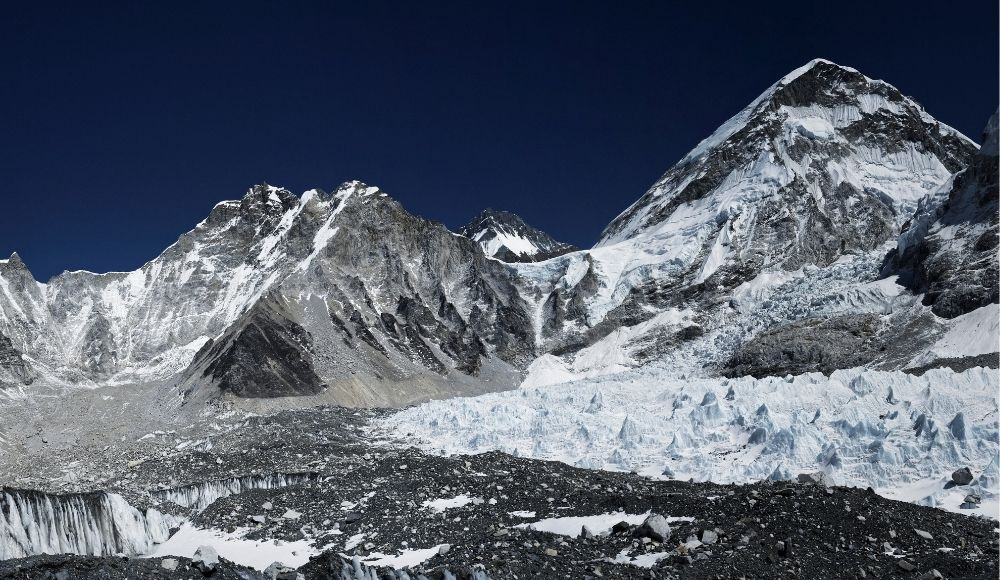
You witness its majestic view after scaling the Cho la pass. Viewpoints like Kalapathar, Gokyo Ri, Everest view hotel, and Renjo La top and Sagarmatha National park are other impressive highlights of the trek.
| Altitude |
Everest Base Camp- 5364m
Gokyo- 4750m
|
| Starting point |
Lukla |
| Distance (both-ways) |
130 Kilometers |
| Best time to visit |
Before Monsoon (Feb-May)
After Monsoon (Sep-Dec) |
| Trip Grade |
Difficult |
| Duration |
17 Days |
Before going on an EBC Gokyo Lake trek the traveller has to gain 3 permits. These permits include Sagarmatha National Park Entry Fee, TIMS card and Khumbu Pasang Lhamu Rural Municipality Fee. Sagarmatha National Park Entry Fee and TIMS card can be obtained from Kathmandu. Similarly, Khumbu Pasang Lhamu Rural Municipality Fee can be obtained from Lukla.
Everest Base Camp Gokyo Lake Trek Itinerary
|
Day 1: Kathmandu Arrival, Transfer to Hotel.
|
|
Day 2: Flight to Lukla, Trek to Phakding.
|
|
Day 3: Trek to Namche Bazaar.
|
|
Day 4: Acclimatization and Exploration Day.
|
|
Day 5: Trek to Tengboche.
|
|
Day 6: Trek to Dingboche.
|
|
Day 7: Rest day in Dingboche.
|
|
Day 8: Trek to Lobuche.
|
|
Day 9: Trek to Everest Base Camp, Return Back to Gorak Shep.
|
|
Day 10: Trek to Dzongla.
|
|
Day 11: Trek to Gokyo Lake.
|
|
Day 12: Exploration Day at Gokyo.
|
|
Day 13: Trek to Dole.
|
|
Day 14: Trek to Namche Bazaar.
|
|
Day 15: Trek to Lukla.
|
|
Day 16: Trek to Namche Bazaar.
|
|
Day 16: Flight to Kathmandu.
|
|
Day 17: Departure.
|
Cho Oyu Base Camp Trek
If you want to have a get-away amid the captivating mountains, in less crowded terrains then Cho Oyu base camp trek is the best. Cho Oyu is the sixth highest peak in the world and the fifth highest peak of Nepal. It is considered to be the easiest one to trek to among the 8000 m above peaks.
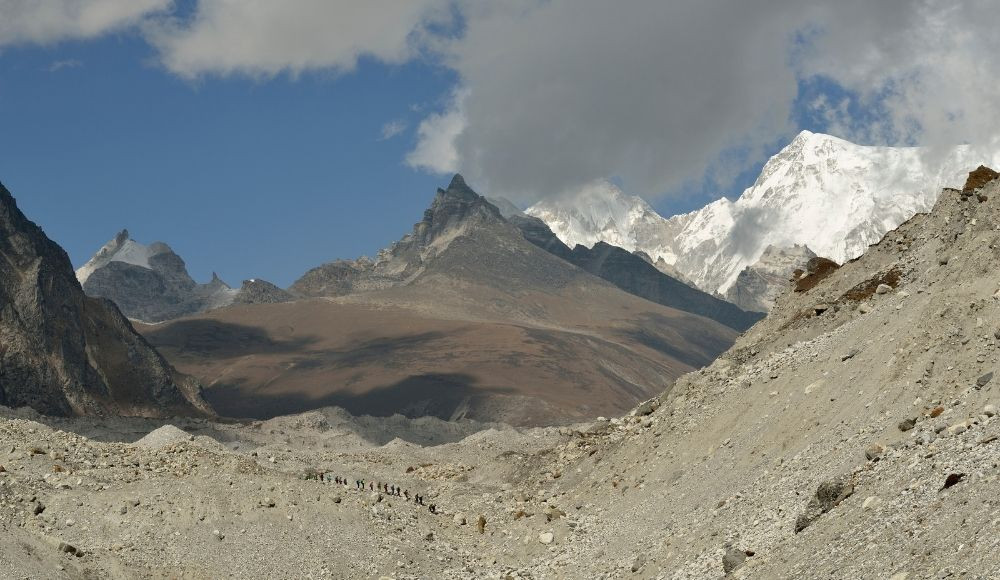
The word Cho Oyu means “Turquoise Goddess” in Tibetan. The trek offers spell-bounding views of the above 8000 meters peaks such as Everest, Lhotse, Cho Oyu and Makalu. The panorama from the base camp Cho Oyu is just to take the trekkers breath away.
A stay at Gokyo Lake and scouting around Sagarmatha National Park will give the adventure an extra high. Living with Sherpas in their tea houses and lodges are the trekkers resort because there are no luxury hotels around the area.
| Altitude |
Cho Oyu Base Camp - 5200m
Gokyo Ri - 5357m |
| Starting point |
Lukla |
| Distance (both-ways) |
|
| Best time to visit |
March-May (Spring)
September-November (Autumn) |
| Trip Grade |
Difficult |
Cho Oyu Base Camp Trek Itinerary
|
Day 1: Kathmandu Arrival, Transfer to Hotel.
|
|
Day 2: Sightseeing Around Kathmandu and Trek Preparation.
|
|
Day 3: Flight to Lukla, Trek to Phakding.
|
|
Day 4: Trek to Namche Bazaar.
|
|
Day 5: Acclimatization and Exploration Day.
|
|
Day 6: Trek to Dole.
|
|
Day 7: Trek to Machhermo.
|
|
Day 8: Trek to Gokyo Lake.
|
|
Day 9: Hike to Cho Oyu Base Camp, Back to Gokyo Lake.
|
|
Day 10: Hike to Gokyo Ri, Trek to Machhermo.
|
|
Day 11: Trek to Namche.
|
|
Day 12: Trek to Lukla.
|
|
Day 13: Flight to Kathmandu.
|
|
Day 14: Departure.
|
Everest Base Camp and Mera Peak Trek
The Everest base camp and Mera peak trek allow the trekkers to get up close to Everest at its base camp and then to head along for summiting Mera peak. The climb to Mera peak is not a piece of cake and requires good trekking skills and gear. It is the highest trekking peak in Nepal. Any peak higher than Mera Peak is said to be a full expedition. However, the spectacle from the peak is simply stunning.
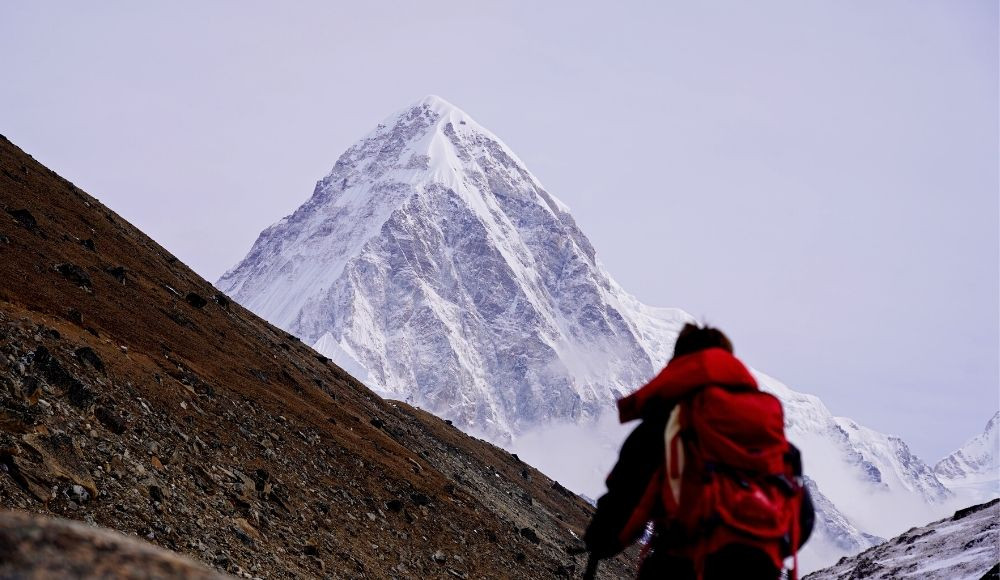
Passing glaciers and passes with Sherpas, you will then unveil the Himalayan treasures that the peak has to offer. The top has astounding upfront views of six of the world’s highest mountains including Everest.
On your way, the lush farmlands, terrains and picturesque Sherpa houses come more alive with the snowy white ahead revealing itself. The climatic conditions of Mera peak are very different from the base so it requires much more caution and preparedness.
| Altitude |
Mera peak-6476 m |
| Starting point |
Lukla |
| Distance (both-ways) |
125 kilometers |
| Best time to visit |
March –May
September-December |
| Trip Grade |
Strenuous |
Everest Base Camp and Mera Peak Itinerary
|
Day 01: Arrival day.
|
|
Day 02: Kathmandu Valley sightseeing and trip preparation.
|
|
Day 03: Fly to Lukla and trek to Paiya (Chutok) [2730m/8954ft]:3-4 hrs
|
|
Day 04: Paiya to Pangkoma [2850m/93,48ft]: 5-6 hrs.
|
|
Day 05: Pangkoma to Nigmsa (Shibucho) [2745m/90,003ft]: 4-5 hrs.
|
|
Day 06: Nigmsa (Shibucho) to Chetrakhola [3150m/10332ft]: 7-8 hrs.
|
|
Day 07: Chetrakhola to Kothe [3600m/11808ft]: 6-7 hrs.
|
|
Day 08: Kothe to Tangnang [4,350m/14,270ft]: 3-4 hrs)
|
|
Day 09: Acclimatization Day: Hiking to Charpate Himal Glacier.
|
|
Day 10: Tangnang to Khare [5,045m/16,486ft]: 2-3 hrs.
|
|
Day 11: Khare to Mera Base Camp [5300m/17,384ft]: 3-4 hrs.
|
|
Day 12: Mera Base Camp to High camp [5,780m/18,958ft]: 4-5 hrs
|
|
Day 13: Mera High Camp to Summit [6,461m/21,1907ft] and back to Khare [5045m/16,547ft]: 8-9 hrs.
|
|
Day 14: Reserve day for Contingency
|
|
Day 15: Khare to Kothe [3600m/11808ft]: 4-5 hrs.
|
|
Day 16: Kothe to Thuli Kharka: 5-6 hrs.
|
|
Day 17: Thuli Kharka to Lukla: 6-7 hrs.
|
|
Day 18: Fly to Kathmandu.
|
|
Day 19: Departure day.
|
The trekkers have a whole line-up of treks to choose from as per their desire and experience. Whichever they choose, the Everest region won’t fall to leave them in awe of the mountains and the culture, making them want for more. Each trek is a profuse experience in itself that is worth setting out for.
Related Article: Mount Everest Rainbow Valley
Best Time to Visit Everest Region for Trekking
The best time to trek in the Everest region for trekking according to the season is explained here.
This is the most favourable time to be trekking in the Everest region. The months of March, April, May, October and November, when there is less rainfall, clear skies and moderate snowfall. However, the trails are pretty busy this time.
The months of December, January and February are winters in the Everest region. The road conditions are good and the skies are clear. But, it is the offseason for trekking in the region because of freezing temperature conditions. So, the trekkers must be extremely careful and well prepared.
The monsoon season lasts from June to early September in the Everest region which is not a suitable time to trek. The weather is wet and leads to muddy trails and roads. Landslides often cause disruptions and risk in the treks so, it is best to avoid this time.
Related Article: Interesting Facts about Mount Everest



